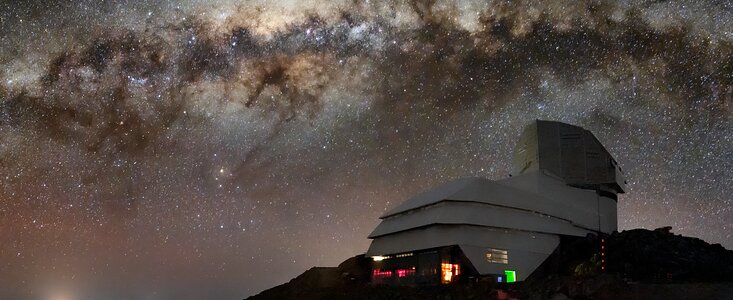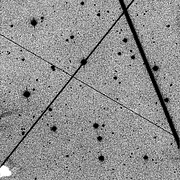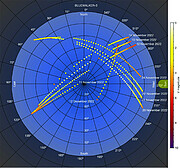- News
- Science
- Scientific Bodies
- Divisions
- Commissions
- Commission A1 Structure
- Commission A2 Structure
- Commission A3 Structure
- Commission A4 Structure
- Commission B1 Structure
- Commission B2 Structure
- Commission B3 Structure
- Commission B4 Structure
- Commission B5 Structure
- Commission B6 Structure
- Commission B7 Structure
- Commission C1 Structure
- Commission C2 Structure
- Commission C3 Structure
- Commission C4 Structure
- Commission C5 Structure
- Commission D1 Structure
- Commission E1 Structure
- Commission E2 Structure
- Commission E3 Structure
- Commission E4 Structure
- Commission F1 Structure
- Commission F2 Structure
- Commission F3 Structure
- Commission F4 Structure
- Commission G1 Structure
- Commission G2 Structure
- Commission G3 Structure
- Commission G4 Structure
- Commission G5 Structure
- Commission H1 Structure
- Commission H2 Structure
- Commission H3 Structure
- Commission H4 Structure
- Commission J1 Structure
- Commission J2 Structure
- Commission J3 Structure
- Commission X1 Structure
- Commission X2 Structure
- Past Commission Organising Committees
- Working Groups
- Centres
- Scientific Meetings
- Rules & Guidelines
- General Assemblies
- Meeting Proposals
- Future IAU Meetings
- General Assemblies
- EC Meetings
- Officers' Meetings
- Regional Meetings
- Symposia
- Focus Meetings
- Institutional Meetings
- IAU Offices Meetings
- IAU-Sponsored Meetings
- Letters of Intent submitted for 2024
- Letters of Intent submitted for 2023
- Letters of Intent submitted for 2022
- Letters of Intent submitted for 2021
- Letters of Intent submitted for 2020
- Past IAU Meetings
- Templates
- Other Meetings
- Grants & Prizes
- Scientific Bodies
- Publications
- IAU Publications
- IAU Strategic Plan
- Symposia
- WGSBN Bulletins
- Regional Meetings
- Information Bulletins/Catalyst
- E-Newsletters
- Focus Meetings
- Transactions A
- Transactions B
- Related Publications
- GA Newspapers
- CAPjournal
- IAU Books
- Brochures
- IAU Offices
- WG Reports
- Commission Reports
- Division Reports
- Past IAU Publications
- Rules, Guidelines and Instructions for Proceedings
- Publishers
- IAU Publications
- Administration
- About the IAU
- Statutes & Rules
- IAU Policies
- IAU Executive Bodies
- IAU Secretariat
- Resolutions
- Members Administration
- Administrative Dates & Deadlines
- International Organisations Relations
- Donate to the IAU
- Training in Astronomy
- Astronomy for Education
- Astronomy for Development
- Astronomy for the Public
- Office for Astronomy Outreach
- FAQ
- Themes
- Satellite Constellations
- Astronomy in Everyday Life
- How to Report a Discovery
- Careers in Astronomy
- Defining our Place in the Cosmos
- The Constellations
- Light Pollution
- Measuring the Universe
- Near Earth Objects
- How to Participate in Astronomy Research
- Naming of Astronomical Objects
- Naming of Exoplanets
- Buying Star Names
- Naming Stars
- Pluto and the Solar System
- IAU Member Statistics
- Our Moon: the Moon
- Meteors & Meteorites: The IAU Definitions of Meteor Terms
- UNESCO-IAU Portal to the Heritage of Astronomy
- Social Media
- Past Events
- Call for Online Resources
- Astronomy@Home Awards
- Contact
iau2409 — Press Release

8 August 2024
Satellite Mitigation Project Led by IAU CPS Wins Major Grant
The initiative is developing tools to accurately predict when satellites will cross the sky
The U.S. National Science Foundation has awarded $750,000 to a project led by the IAU Centre for the Protection of the Dark and Quiet Sky from Satellite Constellation Interference to reduce the science impact caused by satellite constellations on astronomical observatories.
The IAU Centre for the Protection of the Dark and Quiet Sky from Satellite Constellation Interference (IAU CPS), which is co-hosted by NSF NOIRLab and the SKAO, has received a SWIFT-SAT grant [1] from the U.S. National Science Foundation (NSF).
The funded project aims to develop a set of publicly accessible software tools and online services that for the first time would allow astronomers to precisely predict the positions, time of passage and brightness of satellites. One tool called SatChecker, an early version of which was developed by members of the CPS, will help ground-based observatories by providing accurate predictions of satellite positions and their optical brightness. This valuable information will aid astronomers in adapting observation schedules and mitigating some negative impacts on their observations.
“This NSF funding will improve observatories’ ability to reduce the frequency of satellite passes affecting observations, therefore improving science outcomes,” said Connie Walker, Co-Director of the IAU CPS and NOIRLab co-PI of the SWIFT-SAT proposal.
The past decade has seen a surge in commercial constellations, with thousands of satellites launched into low Earth orbit. In as little as five years, 7000 constellation satellites have been launched into orbit — almost as many as the number of individual satellites launched since the dawn of the Space Age. Their number, high brightness, and radio emissions pose a major challenge for ground-based telescopes as they fly over during astronomical observations.
The grant from NSF supports the work of the CPS SatHub, a 200-member-strong international effort that works on the collection and analysis of artificial satellite observations and aims to centralise the development of software tools for the community.
In addition to developing tools to more precisely forecast satellite passes, the funded work will mitigate impacts on two key science goals for the Vera C. Rubin Observatory Legacy Survey of Space and Time (LSST) - characterising transients and performing a Solar System census.
Meredith Rawls, CPS SatHub Co-Lead and Research Scientist at the University of Washington, who works for Rubin Observatory and will advise colleagues working on the funded project, said, "Rubin Observatory is about to begin a groundbreaking decade-long survey of the night sky, and it will see loads of streaks, glints, and flares from artificial satellites. This funding will enable us to better understand and mitigate the resulting science impacts in Rubin data products."
The news from NSF follows a range of positive developments on the protection of dark and quiet sky from satellite constellation interference in the past few months.
In December a UN agency, the International Telecommunication Union (ITU), agreed to look at the risks posed by satellite constellation interference on the protection of radio quiet zones and radio telescopes over the next three years, after intense discussions led to a resolution endorsed by its 193 member countries.
Similarly, the UN’s Committee on the Peaceful Uses of Outer Space (COPUOS), the UN’s top body for space matters, approved in June the inclusion of an item on one of its subcommittee’s agenda for the next five years to address the emerging issues and challenges posed by large constellations. Several dozen nations have been supportive of efforts to address this topic within COPUOS, which has resulted in the establishment of a Group of Friends of the Dark and Quiet Sky within COPUOS to promote awareness of the issue.
With growing momentum in international bodies such as the ITU and COPUOS, the CPS, until now run in large part through volunteer effort, a small grant from the IAU, and in-kind support from its host institutions NOIRLab and SKAO, is looking to increase its ability to support the protection of the dark and quiet sky by securing additional funding to conduct research and analysis.
“There’s been significant progress in recent months in raising awareness of the issue,” said Richard Green, interim CPS Director. “We now need increased financial support and advocacy at national level to impress on policy makers the need for further action and for industry to work with the astronomy field on mitigating the impact of satellite constellations.”
Next week at the IAU General Assembly currently taking place in Cape Town, South Africa, the 12,000 members of the IAU will have a chance to vote on a resolution that proposes to add, for the first time, protection of the dark and quiet sky to the IAU’s mandate, and urges the IAU to encourage organisations in its almost 100 member countries to increase advocacy of efforts to protect the dark and quiet sky with their respective governments. Adoption of the resolution would strengthen the IAU’s and the CPS’s mandate to address the challenges presented by satellite constellations to astronomy, as well as increasing pressure on governments to strengthen legislation in order to protect large public investments in astronomy infrastructure.
Notes
[1] SWIFT-SAT grants (Spectrum and Wireless Innovation enabled by Future Technologies - Satellite-Terrestrial Coexistence) support research on techniques to overcome radio interference and light pollution conflicts between satellite users (communications, earth sensing) and terrestrial users (communications, astronomy) enabling usage growth to benefit society.
[2] The NSF award funds a graduate student position at the University of Illinois Urbana-Champaign (UIUC) and a NOIRLab postdoctoral position hosted at UC Davis. Additionally, 1 million hours of computing time will be made available for the project on UIUC supercomputers. The Aerospace Corporation will provide precise information on space object’s orbits via the US Office of Space Commerce.
More information
The IAU is the international astronomical organisation that brings together more than 12 000 active professional astronomers from more than 100 countries worldwide. Its mission is to promote and safeguard astronomy in all its aspects, including research, communication, education and development, through international cooperation. The IAU also serves as the internationally recognised authority for assigning designations to celestial bodies and the surface features on them. Founded in 1919, the IAU is the world's largest professional body for astronomers.
The International Astronomical Union’s Centre for the Protection of the Dark and Quiet Sky from Satellite Constellation Interference (IAU CPS) is a global organization co-hosted by the US-based NSF NOIRLab and the SKA Observatory (SKAO), under the auspices of the IAU. The CPS facilitates global coordination of efforts by the astronomical community in concert with observatories, space agencies, industry, regulators and other sectors to help mitigate the negative consequences of satellite constellations on astronomy.
NSF NOIRLab (U.S. National Science Foundation National Optical-Infrared Astronomy Research Laboratory), the U.S. center for ground-based optical-infrared astronomy, operates the International Gemini Observatory (a facility of NSF, NRC–Canada, ANID–Chile, MCTIC–Brazil, MINCyT–Argentina, and KASI–Republic of Korea), Kitt Peak National Observatory (KPNO), Cerro Tololo Inter-American Observatory (CTIO), the Community Science and Data Center (CSDC), and Vera C. Rubin Observatory (operated in cooperation with the Department of Energy’s SLAC National Accelerator Laboratory). It is managed by the Association of Universities for Research in Astronomy (AURA) under a cooperative agreement with NSF and is headquartered in Tucson, Arizona. The astronomical community is honored to have the opportunity to conduct astronomical research on I’oligam Du’ag (Kitt Peak) in Arizona, on Maunakea in Hawai‘i, and on Cerro Tololo and Cerro Pachón in Chile. We recognize and acknowledge the very significant cultural role and reverence that these sites have to the Tohono O’odham Nation, to the Native Hawaiian community, and to the local communities in Chile, respectively.
The SKAO, formally known as the SKA Observatory, is an inter-governmental organization composed of Member States from five continents. Its mission is to build and operate cutting-edge radio telescopes to transform our understanding of the Universe, and deliver benefits to society through global collaboration and innovation. Headquartered in the UK, its two telescope arrays will be constructed in Australia and South Africa and be the two most advanced radio telescope networks on Earth. Through the development of innovative technologies and its contribution to addressing societal challenges, the SKAO will play its part to address the United Nations’ Sustainable Development Goals and deliver significant benefits across its membership and beyond. The SKAO recognises and acknowledges the Indigenous peoples and cultures that have traditionally lived on the lands on which the SKAO facilities are located.
Links
- NSF announcement of funding for the CPS
- CPS position paper, with recommendations for the mitigation of satellite constellations’ impact on astronomy
- Optical observations of the AST SpaceMobile BlueWalker3 satellite
- Detection of unintended radio emissions from Starlink satellites
Contacts
Connie Walker
Co-Director, IAU CPS ; NOIRLab co-PI of the SWIFT-SAT proposal; IAU Centre for the Protection of the Dark and Quiet Sky From Satellite Constellation Interference
Email: connie.walker@cps.iau.org
Siegfried Eggl
SatHub co-lead and UIUC Co-PI; IAU Centre for the Protection of the Dark and Quiet Sky From Satellite Constellation Interference
Email: eggl@illinois.edu
Mathieu Isidro
Communications and Outreach Lead; IAU Centre for the Protection of the Dark and Quiet Sky From Satellite Constellation Interference
Email: mathieu.isidro@skao.int
Josie Fenske
Jr. Public Information Officer, NSF NOIRLab
Email: josie.fenske@noirlab.edu
Piero Benvenuti
IAU Secretary-General and incoming CPS Director
Email: piero.benvenuti@unipd.it







